Maneuvering Clearances at Doors [4.13.6]
Pull-side clearance beyond the door swing provides space for a forward reach to door hardware. Maneuvering through doors is often done on an angle, particularly at doors with closers, and the minimum space required is also dependent on how the door may be approached.
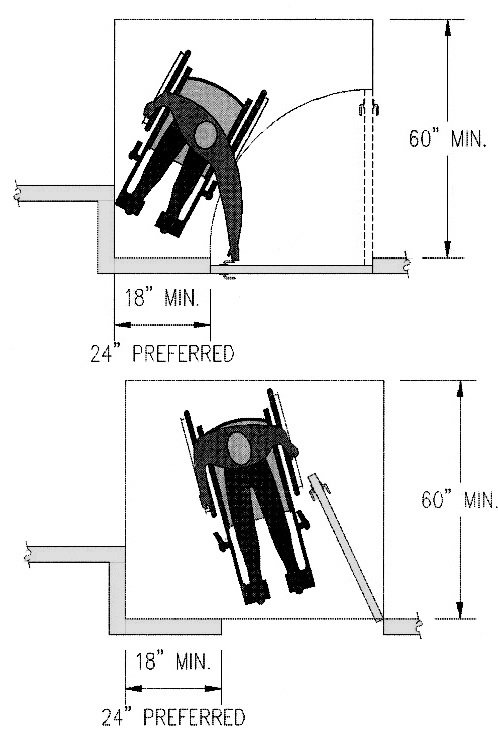
Clearance to the wall plane next to the door (even when the door is in a recess) is essential. This maneuvering space is necessary for anyone using a wheelchair or crutches because the person cannot easily move or step back while opening the door. At what point a recess or the thickness of a wall becomes a problem is not clear. However, the clearance at thick walls must be in the plane of the face of the doorway (unless doors are automated). It is also important that wall-mounted elements, including those with knee and toe space, such as lavatories, not overlap this clearance due to the angled maneuvering necessary. However, limited projections, such as wall-mounted handrails are permitted to overlap clearances.
Latch-side clearance is needed on the push side to be able to operate a latch and maneuver through the door against the force of a closer. The minimum required push-side maneuvering space also is dependent on the approach direction.
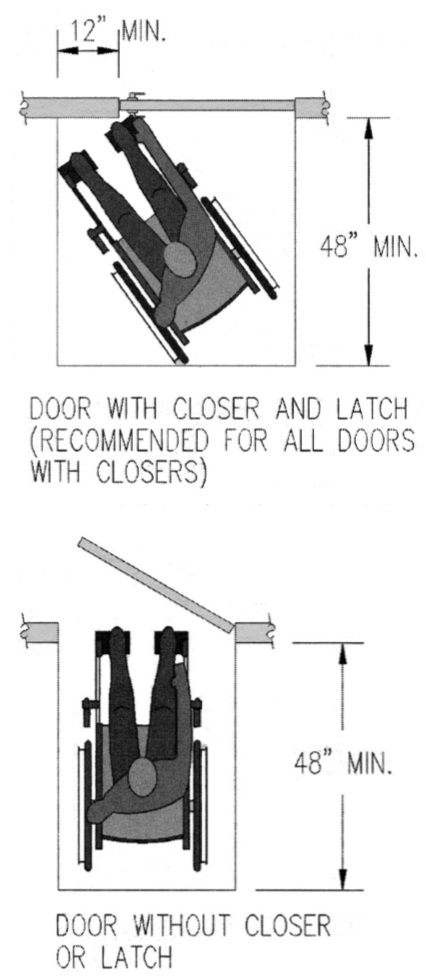
Forward approach clearances are required at doors located in alcoves.
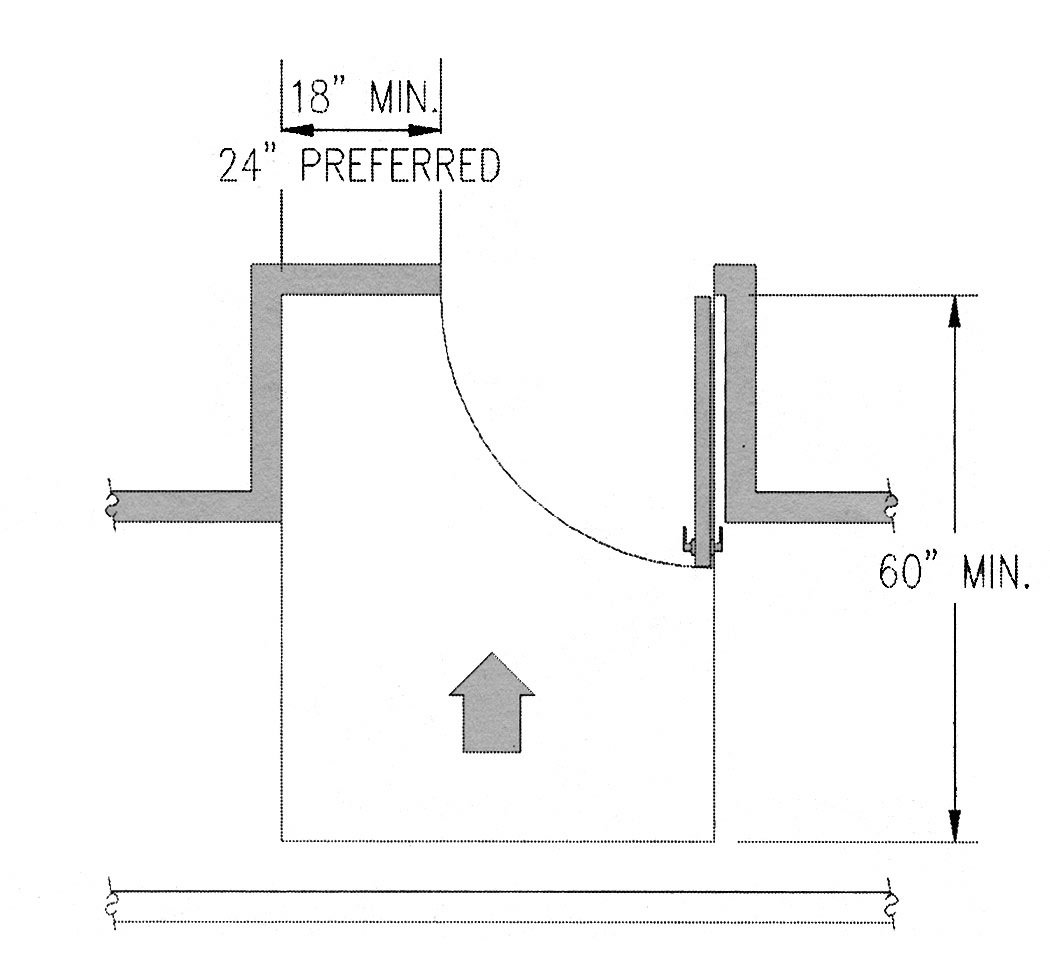
Clearances for Side Approaches
Clearance for side approaches are based on the swing of doors, direction of approach (hinge or latch), and the provision of closers (in some cases latches too). Generally, on the pull side, wheelchair maneuvering is easier from a latch side approach than from a hinge side approach; on the push side, maneuvering is easier from the hinge side than from the latch side.
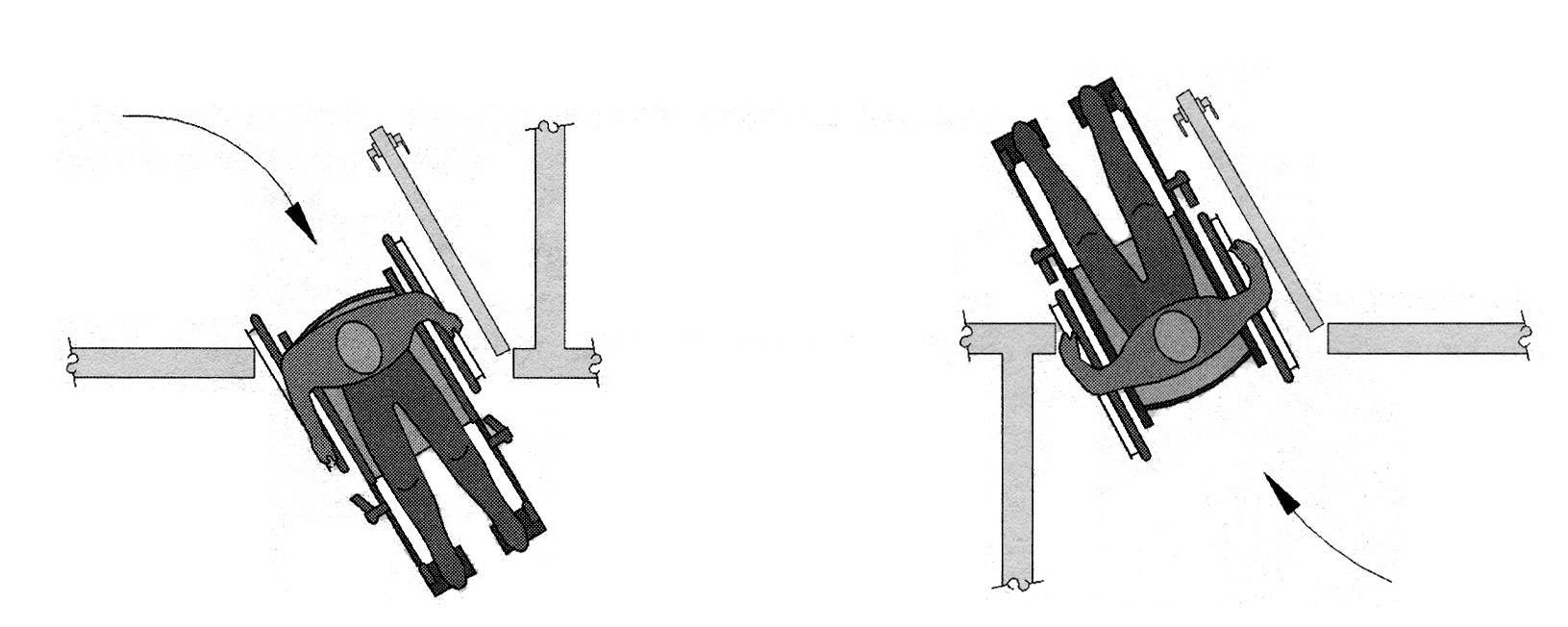
These clearances, which are permitted to overlap, may determine the width of corridors, including entry alcoves with offset doors. Keep in mind that requirements for accessible routes in 4.3, including those for turns around obstructions, may apply as well.
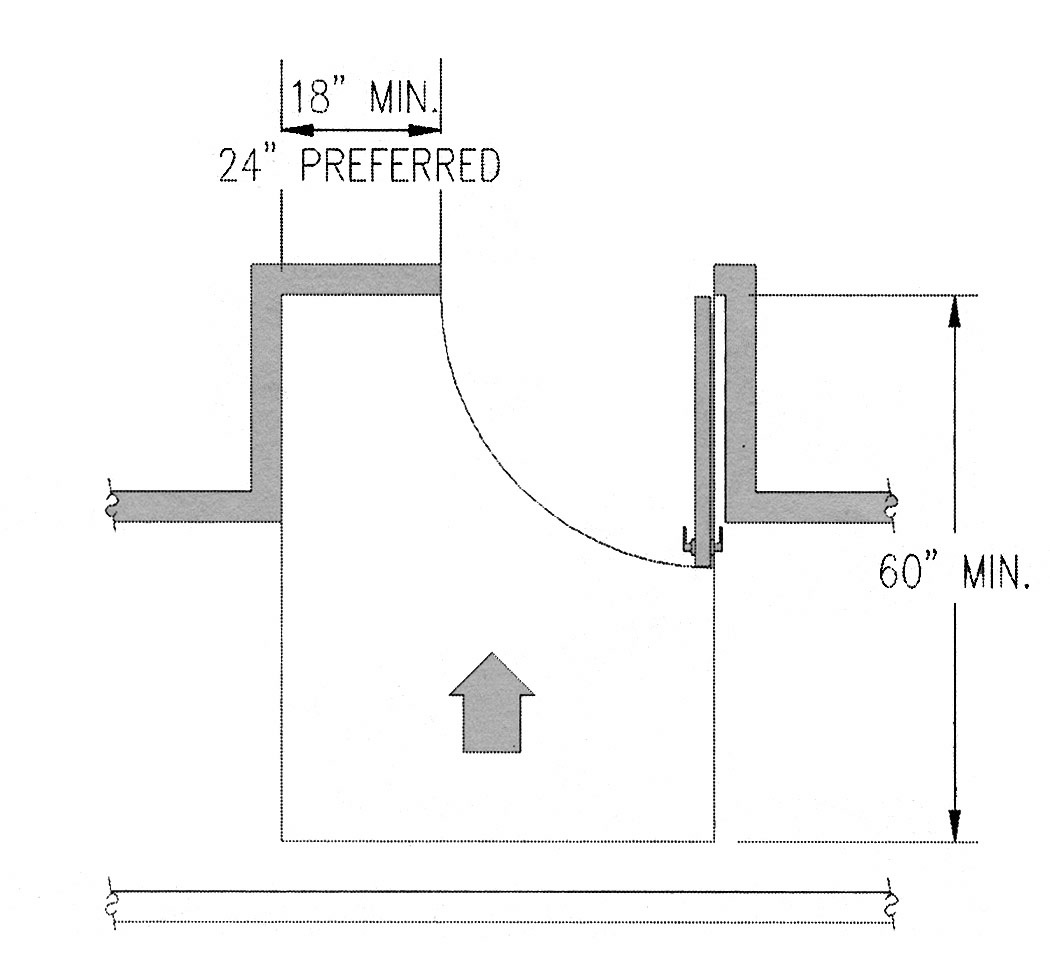

User Comments/Questions
Add Comment/Question